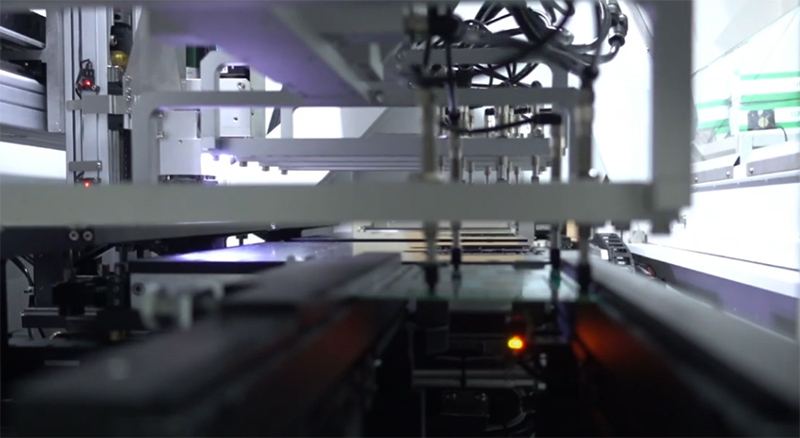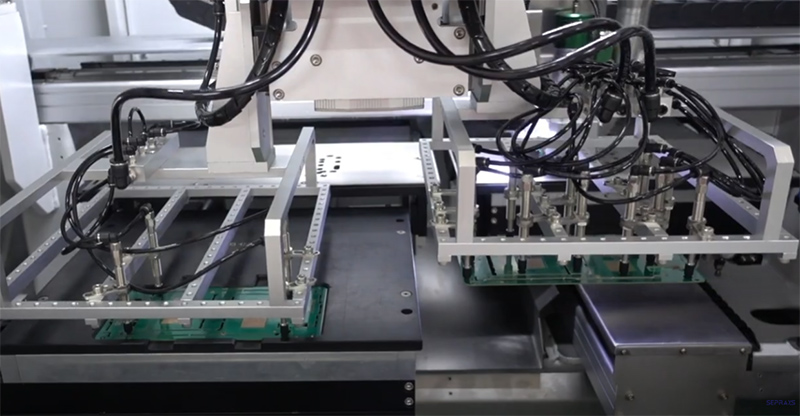 Seprays-Jayden
Seprays-Jayden
 2025-03-25 17:02:42
2025-03-25 17:02:42
 26
26

In the ever-evolving landscape of electronics manufacturing, PCB depaneling is crucial in ensuring quality and efficiency. Among the various depaneling methods, PCB router depaneling has emerged as a preferred choice due to its precision, versatility, and ability to handle complex board designs. This computer-controlled mechanical process utilizes specialized cutting tools to separate individual boards from a panel while maintaining structural integrity and minimizing stress on delicate components. As industries demand higher accuracy and throughput, router depaneling continues to be a key solution for achieving superior results in PCB production.

Router depaneling is a precision PCB separation process that utilizes computer-controlled spindle systems equipped with specialized cutting tools to simulate individual boards from production panels. The CNC-guided operation follows pre-programmed toolpaths to achieve micron-level cutting accuracy while maintaining high throughput rates. This mechanical method offers distinct advantages for thicker multilayer boards and complex designs, combining the reliability of traditional milling with advanced features like real-time tool monitoring and automated debris management. The process eliminates the need for consumables associated with laser systems while delivering consistent results across high-volume production runs. Proper tool maintenance remains essential to preserve cut quality and prevent potential defects in sensitive board areas.
| Feature | Router Depaneling | Punch Depaneling |
| Precision | ±25μm (micron-level) | ±100–200μm (limited by die tolerance) |
| Stress on PCB | Low (controlled cutting force) | High (impact force risks delamination) |
| Tooling Cost | No custom dies (uses standard end mills) | High (5k–5k–20k per die design) |
| Setup Time | Minutes (digital toolpath upload) | Hours (die alignment/calibration) |
| Design Flexibility | Unlimited (CAD-driven, handles complex shapes) | Limited (fixed die geometry) |
| Material Compatibility | FR4, Rogers, metal-core, rigid-flex (0.1–6mm) | Best for simple FR4 designs (≤3mm) |
| Edge Quality | Burr-free (meets IPC-A-600 Class 3) | May require deburring |
| Throughput | 300–800 panels/hour | 1,000+ panels/hour (for simple designs) |
| Automation | Fully automatable (vision/ATC integration) | Limited by manual die changes |
| Best For | High-mix, complex, or sensitive PCBs | High-volume, simple designs |
| Industry | Applications | Why Router Depaneling is Used |
| Consumer Electronics | Smartphones, tablets, laptops, wearables | High precision for small, dense PCBs |
| Automotive | ADAS, infotainment, EV battery systems | Handles thick, high-current boards safely |
| Medical Devices | Implants, diagnostic equipment, imaging | Low stress prevents damage to delicate circuits |
| Industrial | Control systems, power electronics | Cuts complex shapes in rugged boards |
| Aerospace/Defense | Avionics, satellites, military hardware | Meets strict reliability standards |
| Telecom | 5G base stations, network gear | Precision for high-frequency signal integrity |
| LED Lighting | High-power LED arrays, displays | Clean cuts for heat-sensitive materials |
| Parameter Category | Key Considerations | Why It Matters |
| Spindle Specifications | • Speed range (e.g., 30,000–100,000 RPM) | Determines cutting precision and material compatibility |
| • Power rating (1–5kW typical) | ||
| • Runout accuracy (<1µm preferred) | ||
| Positioning Accuracy | • Linear encoder resolution (±5µm or better) | Ensures consistent cut quality for fine-pitch components |
| • Repeatability (±2µm) | ||
| Cutting Capacity | • Max panel size (e.g., 610×610mm) | Must match your production panel sizes and PCB types |
| • Material thickness range (0.1–6mm) | ||
| Automation Features | • Automatic Tool Changer (ATC) | Reduces setup time and enables lights-out manufacturing |
| • Vision alignment system | ||
| • Conveyor interface | ||
| Dust Management | • HEPA filtration (≥99.97% @ 0.3µm) | Critical for cleanroom environments and operator safety |
| • Vacuum suction power (≥5,000Pa) | ||
| Software Compatibility | • Supports Gerber, DXF, IPC-7351 | Streamlines workflow from design to production |
| • CAD/CAM integration options | ||
| Material Compatibility | • FR4, Rogers, metal-core, flex | Ensures capability with your specific PCB materials |
| • Copper weight handling (1–6oz) | ||
| Throughput | • Feed rate (0.5–5 m/min adjustable) | Impacts production efficiency and ROI |
| • Tool change time (<5 sec preferred) | ||
| Maintenance Requirements | • Tool life monitoring | Affects long-term operating costs |
| • Lubrication intervals | ||
| • Calibration frequency | ||
| Safety Features | • Emergency stop | Protects operators and equipment |
| • Vibration damping | ||
| • Enclosed cutting area |
GAM336AT In-Line Automatic PCB Router Depaneling Machine streamlines PCBA handling with 0-180° flexibility, ensuring compatibility across various production stages. For elevated productivity, dual-spindle models like the GAM336AD and GAM336ALD are also available, making the GAM 336AT series a versatile and efficient choice for high-quality PCB separation.
The GAM 330AT In-Line Automatic PCB Router Machine by SEPRAYS is a high-precision and efficient solution for automatic routing and depaneling of printed circuit boards (PCBs).
As the electronics industry advances, router depaneling remains an essential method for achieving high-precision PCB separation. Its ability to accommodate multilayer designs, minimize mechanical stress, and maintain consistency in large-scale production makes it an invaluable asset in various industries. By carefully considering factors such as spindle speed, tooling selection, and automated features, manufacturers can optimize their depaneling processes to meet stringent quality standards. As technology progresses, further advancements in CNC control and automation will continue to enhance the capabilities of router depaneling, solidifying its role in the future of PCB manufacturing.

E-mail : sales@seprays.com
Tel : +86-0769-83284766
+86-13925527370
Address : 5th Floor, B2 Building Research Center Songshan Lake Intelligent Valley, Liaobu Town, Dongguan City, Guangdong Province, China